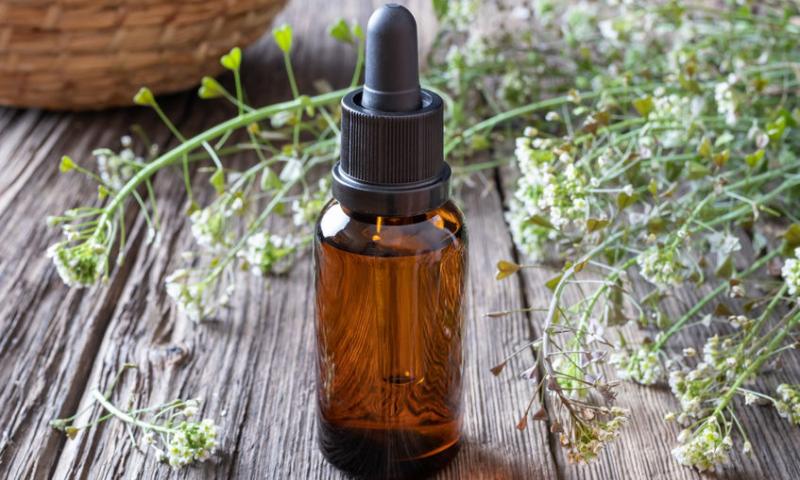 />
/>
COMMON NAME: Shepherd's Purse
LATIN NAME: Capsella Bursa-Pastoris
CHINESE NAME: Ji Cai
ORIGIN: Europe
HABITAT: Europe, India, Western Asia. Shepherd's Purse is a widespread weed plant. It grows in the fields, gardens, near houses, along roads, along ditches, etc. It grows in temperate and subtropical regions of the globe. The reserves of the species are very large, many times greater than the need for raw materials.
The reason for the wide spreading of the Shepherd's Purse is its ability to produce a large amount of seeds. During the growing season, one copy of this plant produces up to 64,000 seeds, which quickly germinate and produce up to four generations.
BOTANICAL INFORMATION: The Shepherd's Purse (lat. Capsella bursa - pastoris (L.) Medik.) Belongs to the cabbage family (lat. Brassicaceae). The Latin name Bursae Pastoris literally translated as a shepherd's bag. In temperate and subtropical zones there are about 5-7 species of Shepherd's Purse.
The Shepherd's Purse is an annual herbaceous plant up to 30 cm sometimes up to 60 cm high, with a spindly thin root. The stem is simple or branched, upright, bearing a long brush of small flowers. Radical leaves are collected in a rosette, petiolate, pinnately separated. Shepherd's Purse has few stem leaves, which are sessile, alternate, upper - almost linear with arrow-shaped base. Inflorescence is a brush that elongates greatly during fruiting. Flowers on pedicels are small, 2 - 4 mm long. The cup consists of four sepals. The corolla is made of four white petals. Shepherd's Purse has six stamens, pistil is with short column and slightly thickened stigma. Seeds are small, more than eight in each nest. The seeds are ellipsoid, oblate, and yellow-brown in color. The plant blooms from April to autumn, bears fruit in May.
CHEMICAL COMPOSITION: Shepherd's Purse contains tannins, inositol, choline, acetyl-choline, tyramine; organic acids (sulfanilic, oxalic, protocatechinic, fumaric, citric, bursa and tartaric acids); saponones, β-sitosterol, alkaloids; vitamins C and K; coumarins; flavonoids: rutin, diosmin, luteolin 7-rutinoside, luteolin 7-glucogalactazide, quercetin glycosides, luteolin, diosmetin, gissopic ramoglycoside, large amounts of potassium, macro-and microelements, for example iron, phosphorus, zinc, calcium, magnesium, and sodium.
A LEGEND ABOUT SHEPHERD’S PURSE:
Once a shepherd drove a herd of cows to graze. Suddenly in the forest, he saw wolves. The shepherd began to drive the flock home and scare away the predators. The wolves were frightened and ran away, but the shepherd felt pain in his leg. He took off his shoes and saw a piece of glass there. When the shepherd pulled it out, blood started flowing. From powerlessness, he fell to the ground and wept. Tears did not fall to the ground, but hung on a plant unknown to the shepherd. He decided that it was a sign of God, tore off the grass and applied it to the wound. The bleeding stopped and the pain went away. Since that time, this plant began to be used for food and treatment of diseases. People noticed that its seeds are collected in a triangular box. They decided that it was the shepherd’s frozen tears and called the plant a Shepherd's Purse.
*This article is for informational purposes only. We suggest consulting a physician before using these or any other herbal supplements.
